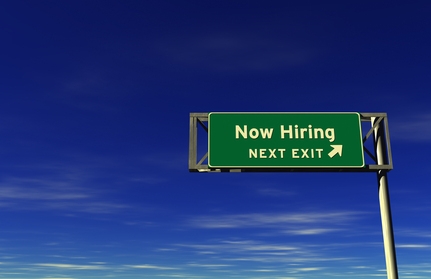This is the second article in a five-part series on risk management. Additional articles in this series can be found here: Part 1, Part 3, Part 4, and Part 5.
Has your company had to deal with an employee lawsuit in the past few years?
If you have, you know they are frustrating and costly, and are a major loss of profits when they occur. Lawsuits can come from many issues. For this series, we'll reference lawsuits coming from Equal Employment Opportunity Commission issues or Workers' Compensation claims.
You first need to understand an underlying principle that reducing your business risk as a company is critical to your company's bottom line. If you reduce your risk, you will in turn help to increase your profitability as a company. Business risk can take on many forms such as:
- Financial Risk: Asset price volatility (currency, interest rates, material & labor costs)
- Operational Risk: Efficiency / productivity
- Hazard Risk: Lawsuits, Insurance Claims (Work Comp, General liability, Fire)
In the last 10 years, the settlement costs of lawsuits have risen to over $310,000. If you were sued by one of your employees, and the settlement was a mere $15,000, how much do you think that would cost your company? Would you be surprised to learn a claim like that would cost your company over $50,000? If your profit margins in this example were 4%, it would take you $1,250,000 in additional sales to make up for that loss.
To better understand how risk impacts your bottom line, you need to know about the study of Total Cost of Risk (TCOR) which we will discuss later in this series.
In our previous article, we referenced a system for increasing your profitability called the "4P" plan. The first section of this plan is called the "Pre-Hire" process. It begins with an assessment of your hiring practices. What does your hiring process look like these days? Do you feel like you have a good water tight system in place for the hiring of new employees, or have you gotten rusty since you've not been doing a lot of hiring in the past several years? Do you feel like you're using good employment applications and asking appropriate questions?
What successful companies have come to realize is how effective you are in your hiring process can be a great indicator for your profitability in the future. It always pays to hire "good" people. Studies have shown that hiring the "wrong" person can be very costly in the loss of productivity from having to find someone new to take their place and can be fertile ground for higher Workers' Compensation claims when they occur.
In the Pre-Hire process, it is always wise to request a Motor Vehicle Report (MVR) on your potential candidates from a vendor who specializes in that service. A couple good sources for this are the Insurance Information Exchange or LexisNexis Employment Screening.
You may also want to consider having a Personality Profile processed for your potential candidates to help ensure you're hiring the "right" person for the job. Predictive Results and Zero Risk HR are two companies that specialize in this area and report a 96% success rate in helping you make sure you're hiring the best person for the position. Many people have hired the proverbial "dog that can point that can't hunt". I trust you know who those people are: they tell you exactly what you want to hear, but are just not a good fit for your company.
Background checks have become a routine part of the pre-hire process these days. You can reach out to First Advantage, Edge Information Management or National Crime Search as options for this important process.
In our next article in this series, we'll look at the second part of the "4P" plan — The Post–Offer process and it's importance to your profitability.





